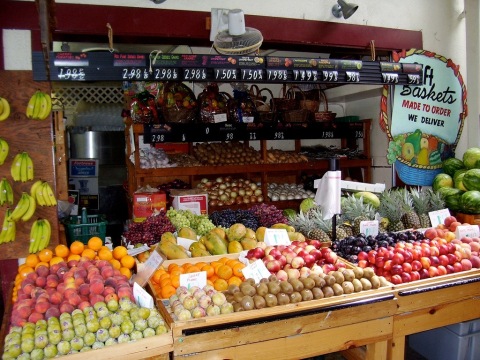Category Archives: food
Iceland’s food system at risk

Photo by Holly Jacobson, 2016
There is no doubt that islands are particularly vulnerable to climate change. This leads to an array of risks, one being threats to food security. Cheap agricultural imports, one way of trying to ensure food security, can undermine the financial stability of small farm businesses in a country like Iceland. Farmers around the world are already a vulnerable to the physical effects of climate change, but in a country like Iceland the lack of a contingency plan and the failure to adopt adaptation measures for food security are shocking. Holly Jacobson, MCP’16 investigates why Iceland is in this situation. She explores the way governmental and non-governmental actors think about risk and resilience. Understandably, economic concerns are at the top of many people’s list. However, moral, sentimental and ideational values also shape risk perception and ought to be taken into account. How can planners take account of different kinds of vulnerabilities in formulating resiliency plans?
Continue reading Holly’s thesis by downloading it here.
Urban Agriculture Contributes to Sustainable Development of Cities: How do we make it permanent?

In the 21st century cities have increasingly adopted sustainability as a guiding principal, offering a window of opportunity for the incorporation of urban agriculture into city land use planning efforts. In addition, the engagement of commercial urban farms with local economies has allowed urban agriculture to enter the realm of economic development. Despite these advancements, many still frame their understanding of urban agriculture as interim land use while waiting for appropriate real estate development to happen. In his 2014 thesis, Andrew Cook (MCP ’14) argues the sustainable development characteristics of urban agriculture can only be accessed by treating it as permanent rather than a temporary land use.
To illustrate his argument, Andrew draws on a case study of Baltimore City, specifically the temporary use on city-owned land programs: Adopt-A-Lot and Homegrown Baltimore Land Lease Initiative. Andrew traced the historical relationship of urban agriculture to city development, Baltimore’s shrinking population, Baltimore’s policy environment as well as the histories of each program. He found that Baltimore’s view that urban agriculture runs counter to the economic growth objectives of a city, has limited the sustainability, economic, environmental and social benefits of urban agriculture projects. Through his evaluation of several urban commercial farms, community farms and demonstration farms, Andrew provides an alternate view, showing how urban agriculture can drive rather than hindering economic development. He offers a series of recommendations that woucl allow cities to realize the maximum benefit of urban agriculture. To learn more, read Andrew’s full thesis here.
Bringing Fresh Produce to the Corner
In many cities, the ability to eat nutritiously is hardly universal. Communities that are not fortunate enough to have a local supermarket are left without a means of obtaining fresh produce. Corner stores are generally seen as part of the problem as they provide easy access to tobacco and junk food but rarely reserve space on their shelves for produce. Advocates for healthy communities would score a major victory if they could work with these small retail outlets to revamp their product lines and include healthy alternatives.
